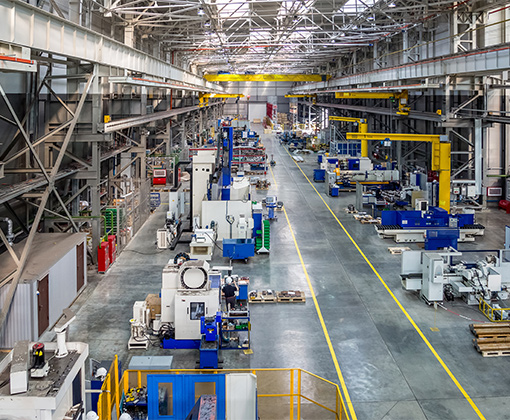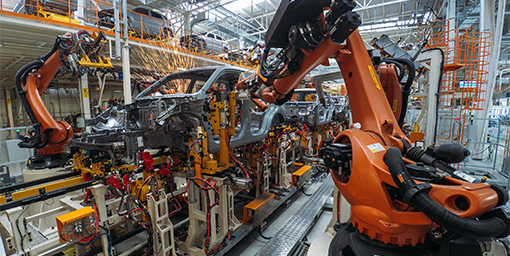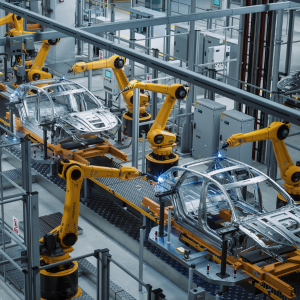What Is Just-In-Time Manufacturing
Post By: Luke West On: 14-06-2022 - Manufacturing
New technology constantly produces new concepts in manufacturing, along with new terminology to describe them. One such term is JIT, or Just-In-Time manufacturing. It's a concept with a fairly long history that began more than 50 years ago as a management philosophy. It was originally devised at the beginning of mass production, to help integrate advanced automation into manufacturing. In the fast-moving world of Industry 4.0 (or even looking forward to 5.0), JIT has recently gained greater traction as a technique for dealing with ever-changing production demands.
What Is Just-In-Time Manufacturing?
JIT originally referred to a manufacturing workflow methodology. Goods should be produced exactly to meet customer demand, taking in the multiple parameters of time, quantity and quality. This applied whether the customer was the end-user, or a secondary production process. The precise definition of JIT has since evolved, and in today's terms means minimum waste, or lean manufacturing. Again, this includes multiple parameters, covering both materials and resources as well as time.
Where Did Just-In-Time Manufacturing Come From?
JIT was first developed in the Toyota manufacturing plants by industrial engineer Taiichi Ohno. Often called the 'Father of the Toyota Production System (TPS)', Ohno perfected a philosophy which has been applied in many Japanese manufacturing organisations since the 1970s. Its guiding principle was to meet customer demands exactly and with the minimum delay, involving its people closely in the working of a production plant. This approach was so successful that it was adopted as 'Lean Manufacturing' by many American organisations, such as Dell and Hewlett Packard.
How Does Just-In-Time Manufacturing Work?
Reducing waste in all forms, and improving product quality & production efficiency are the primary goals of JIT. If it's suitably adapted to each organisation, JIT manufacturing can substantially strengthen a company's marketplace competitiveness and increase its ROI. Toyota understood that JIT would only work with the commitment of every individual in the organisation. Plus, to meet demands exactly, plant and processes must be designed for maximum output and efficiency.

JIT Key Principles
As Ohno devised it, JIT was founded on several key principles. The most important was to eliminate the seven different types of waste he identified:
- Excess motion
- Overproduction
- Excess inventory
- Product defects
- Waiting time
- Processing delays
- Transportation delays
Backing this up was a policy of continuous improvement:
- Designing systems that will pinpoint and identify fundamental problems Attacking these fundamental problems
- Attacking these fundamental problems, which constitute anything not adding value to the product
- Coming up with 'foolproof' tools, jigs, methods, etc. that will prevent mistakes
- Preventive or predictive maintenance, to ensure equipment and machinery functions perfectly when it's needed
- Striving for simplicity, so that systems are easier to understand and manage, and so less prone to breakdown
- Making plant layouts product-oriented, to reduce time spent moving things around from one area to another
- Making each worker directly responsible for quality control of their own work

Several other factors contribute to the effectiveness of JIT, including simplifying the process tools and introducing intelligent process automation. LED signal lights are an integral part of the production system, indicating where any problem requires corrective action. Ohno also made sure that the workplace was optimally clean and well organised; his workers were multi-skilled for greater flexibility and job satisfaction.
JIT And Additive Manufacturing
JIT's key principles rely on full use of resources, maximising efficiency and eliminating wastefulness. Post-dating Ohno's philosophy is the development and advance of additive manufacturing, usually called 3D printing. While preventive maintenance helps to avoid unexpected shutdowns, there's always a possibility that something unpredicted will go wrong. Human error or unforeseen environmental catastrophes might cause machine failures which require immediate repair.
What if spare parts aren't delivered on time by suppliers, or they've become obsolete, and just take too long to reproduce in a machine shop? This violates the principles of JIT, wasting time and introducing delays in production schedules. If things don't keep moving, the product's final cost begins to rise, which emphasises the importance of machine maintenance. Keeping spare parts in store also contravenes JIT principles by wasting space, but it's perhaps a lesser evil than having no spares at all.
Introducing 3D printing into JIT manufacturing allows a business to be independent of external suppliers. Spare parts can be created cost-effectively and on demand, reducing both the cost of the spares themselves and of storing them. CAD files take up very little storage space and are available instantly to feed into a printer, either in-house or contracted out. 3D printing is particularly useful if a part becomes obsolete, when it can be instantly reproduced and printed from file. Design engineers are able to update files with corrections where required, and constantly improve on their products. In this way, JIT manufacturing methodology can be applied to maintenance and spare parts inventory.
Just-In-Time Manufacturing: Advantages And Disadvantages
JIT's ultimate aim is to produce top-quality items only in quantities that exactly meet the demand. To do this requires maintaining equally exact inventory, including both raw materials and finished goods, which in turn demands extremely careful planning. It can be done, with the aid of sophisticated technology and software to manage the entire supply chain.

JIT Advantages
Ideal JIT manufacturing means production exactly equals demand, so there is no wastage due to excess or obsolete stock. This not only cuts inventory costs, but also the costs of warehousing and storage, allowing these funds to be redistributed. JIT also keeps an organisation flexible to changes in product specification, if there is significant alteration in market demand. Less inventory means less investment to achieve the same production levels. This increases ROI and the organisation's overall profitability.
However, to achieve this kind of streamlined JIT production, all parties involved across the whole supply chain must keep in very close communication. This is a Japanese management technique often referred to as Kanban, or signboard. Today, this means a real-time status board that shows every stage of a product's journey, and can be installed as an integral software solution.
JIT Disadvantages
JIT demands immense focus on product quality, and the necessity of waste reduction can make it difficult to always get it right the first time. Sensitivity to any kind of error in JIT production leaves no room for mistakes with a bare minimum inventory. This reduced inventory level also makes production less adaptable to any sudden increase in market demand.
JIT manufacturing is a powerful philosophy, and when it works, it's perfect. But it only works when everyone involved is wholly committed and in full communication with each other. If anyone at any point in the supply chain or production process fails to fulfil their obligations, or to do so in a timely manner, then JIT will break down. With little or no buffer in stock levels, any kind of supply chain failure can lead to sudden production downtime, and cause the organisation substantial losses.
JIT And Commitment
JIT is a thoughtful and well-designed management philosophy which can help an organisation to achieve maximum productivity with minimum input. However, it's only practicable with the commitment of all the contributing parties. This means that everyone, across the entire organisation and supply chain ecosystem, must understand the principles of JIT and commit to it. They must be flexible and self-monitoring, and able to work together for a common goal with maximum coordination. To initiate and perfect JIT in any organisation requires very careful planning, and relies heavily on open and timely communication. Technological solutions such as Kanban software and 3D printing may be applied to help the whole process run more efficiently.
Get More From Rowse Straight To Your Inbox




